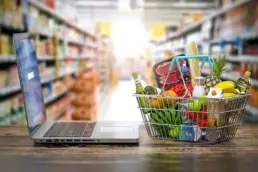EuroWell CEO Explores Thriving in a Digital World: A BFMTV Focus PME Interview
EuroWell CEO Explores Thriving in a Digital World: A BFMTV Focus PME Interview
EuroWell’s CEO, Alec Briem, takes the stage in an insightful interview on BFMTV’s Focus PME, diving into the strategies employed by EuroWell to flourish in an increasingly digital landscape while selling traditional products. In an dialogue with Vincent Touraine, Alec Briem unveils how EuroWell embraces digitalization as a catalyst for growth and innovation.
He emphasizes that digitalization has not replaced EuroWell’s physical products but has instead enhanced them, allowing the company to evolve and meet the changing needs of its customers. EuroWell remains dedicated to preserving its traditional values while embracing the opportunities presented by digitalization, ensuring its enduring presence in the market for years to come.
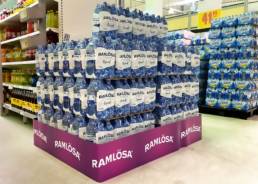
EuroWell is a Swedish company which delivers products for in-store display and sales promotion throughout Europe.
Offices in Stockholm & Paris, POS experts boosting grocery sales.
Unique printing network, safe delivery, customer-focused.
19,000 projects in 35 countries since 1999, valued returning clients.
Read more
Out-of-stock on the Rise: A Cause for Concern
December 6, 2023
FMCG: Unique CPM comparison between online and in-store advertising
September 29, 2022
Facebook study: Consumers make purchase decisions in store
September 22, 2021
Out-of-stock on the Rise: A Cause for Concern
Out-of-stock on the Rise: A Cause for Concern
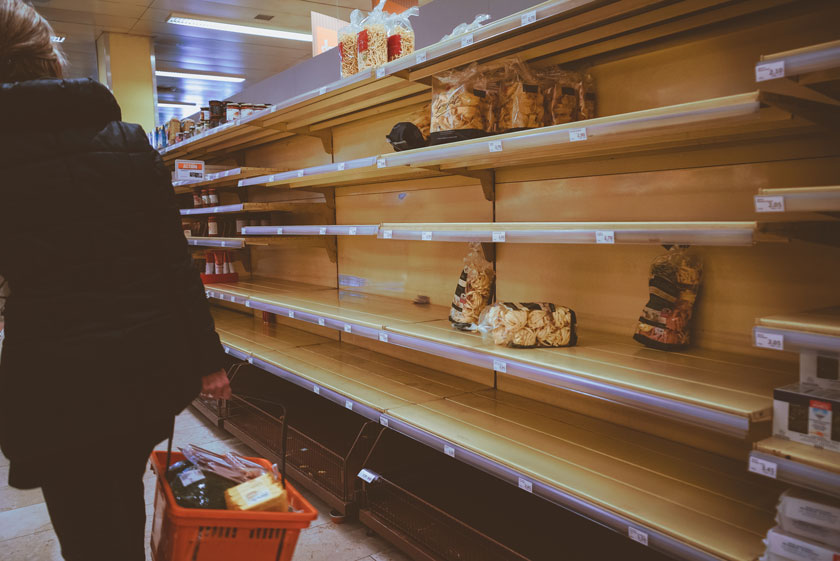
Out-of-stock, or the unavailability of a product at a retail store which leads to empty shelves, have been a persistent problem in the grocery industry for many years. However, the COVID-19 pandemic has led to a significant increase in out-of-stock, as supply chains have been disrupted and demand for certain products has surged
A 2022 study by Lusk et al. found that out-of-stock rates increased by approximately 130% after the COVID-19 pandemic. The study also found that the highest out-of-stock rates were in categories such as meat and poultry products, some convenience and frozen foods, baby formula, and carbonated beverages.
The increase in out-of-stock has had several negative consequences for grocery retailers, as highlighted by a study by Cachon et al. (2004), titled “Stock-Outs Cause Walkouts.” This study found that out-of-stock can lead to a loss of sales, reduced customer satisfaction, and increased customer churn. The study also found that customers are more likely to switch to a different store if they experience a out-of-stock.
Repeated out-of-stock can erode customer trust and damage a store’s reputation. Narasimhan and Dulac (2000) conducted a study to investigate the impact of out-of-stock on consumer satisfaction in more detail. The researchers found that both the frequency and severity of stock-outs had a negative impact on consumer satisfaction. Consumers who experienced more frequent or longer out-of-stock were less satisfied with the store, less likely to return to the store in the future, and more likely to perceive the store as unreliable.
The negative impact of out-of-stock on consumers is evident. They can cause inconvenience and frustration, as customers may have to waste time and money searching for products at other stores. This can lead to several negative consequences, including:
- Reduced customer satisfaction: Customers who experience out-of-stock are less likely to be satisfied with their shopping experience. This can lead to negative word-of-mouth and a decline in customer loyalty.
- Lost sales: When customers cannot find the products they are looking for, they may leave the store without purchasing anything. This can lead to lost sales for the retailer.
- Increased customer churn: Customers who are unhappy with their shopping experience are more likely to switch to a different store. This can lead to increased customer churn for the retailer.
There may be many reasons why store shelves are empty, but the main concern should not be lost revenue but rather dissatisfied customers.
References
Cachon, G. P., Randall, T. M., & Schmidt, L. M. (2004). Stock-outs cause walkouts. The Journal of Marketing, 68(2), 26-41.
Lusk, J. L., Fox, J. A., & Shogren, J. F. (2022). Grocery store stock-outs, consumer demand, and prices during the COVID-19 pandemic in 2020. Applied Economics, 54(10), 1446-1455.
Narasimhan, R., & Dulac, H. (2000). The impact of stock-outs on consumer satisfaction and loyalty. Journal of Retailing, 76(1),

EuroWell is a Swedish company which delivers products for in-store display and sales promotion throughout Europe.
Offices in Stockholm & Paris, POS experts boosting grocery sales.
Unique printing network, safe delivery, customer-focused.
19,000 projects in 35 countries since 1999, valued returning clients.
Read more
Out-of-stock on the Rise: A Cause for Concern
December 6, 2023
FMCG: Unique CPM comparison between online and in-store advertising
September 29, 2022
Facebook study: Consumers make purchase decisions in store
September 22, 2021
The Crucial Role of the Physical Store as the Final Touchpoint in Consumer Purchase Journey
The Crucial Role of the Physical Store as the Final Touchpoint in Consumer Purchase Journey: Elevating Grocery Shopping with In-Store Advertising
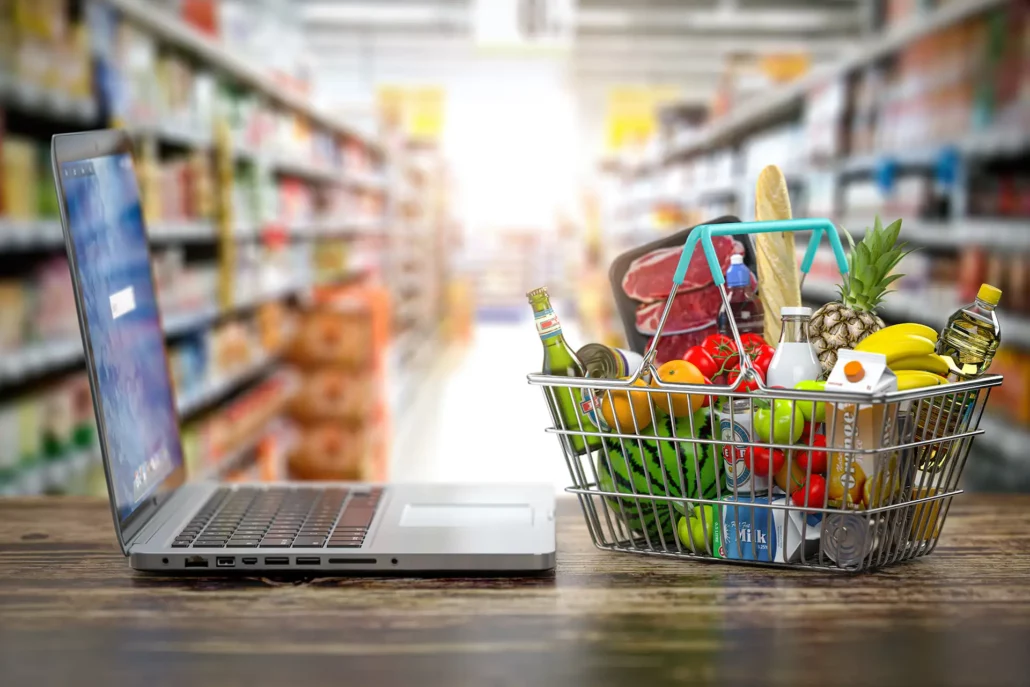
In an era dominated by online shopping and digital transactions, the physical store remains a cornerstone in the consumer purchase journey. Nowhere is this more evident than in the realm of grocery shopping. As consumers increasingly seek convenience and personal experiences, the physical store emerges as the last touchpoint, wielding significant influence over purchase decisions. In this context, in-store advertising, such as pallet wraps and displays, takes center stage as a powerful tool for retailers to enhance the shopping experience and boost sales.
The Power of the Final Touchpoint:
The consumer purchase journey is a multi-step process that culminates in the final touchpoint—the physical store. After browsing online, researching products, and comparing prices, consumers often visit a brick-and-mortar store to finalize their purchasing decisions. This is the stage where tangible experiences, sensory engagement, and direct interactions with products and staff take place. A physical store can either reaffirm consumers’ intentions to purchase or sway them in new directions based on what they encounter in-store.
Grocery Shopping and the Importance of Physical Stores:
Grocery shopping transcends mere necessity; it’s an experience that engages multiple senses and emotions. The touch, feel, smell, and visual appeal of fresh produce, well-organized shelves, and the ambiance of the store all contribute to an immersive encounter. These aspects build a sense of trust and authenticity that digital shopping platforms struggle to replicate. Furthermore, the immediacy of purchasing items and the ability to assess quality in person are pivotal factors for grocery shoppers.
In-Store Advertising: Pallet Wraps and Beyond:
In-store advertising, particularly techniques like pallet wraps and eye-catching displays, holds immense potential in transforming the physical store into a compelling marketing platform. Pallet wraps are customizable POS products delivered on rolls that are wrapped around product pallets or gondolas to deliver targeted messages. Here’s how retailers can leverage these methods to increase sales and enhance the purchase experience:
Grabbing Attention: Pallet wraps are strategically placed in high-traffic areas, immediately capturing shoppers’ attention. These bold visuals can spotlight new products, promotions, or seasonal offerings, enticing customers to explore beyond their initial shopping list.
Cross-Promotion: Pallet wraps can facilitate cross-promotion by featuring related products together. For instance, a wrap around a fruit pallet can promote a new yogurt brand, encouraging customers to consider complementary items for a balanced breakfast.
Education and Information: In-store advertising can educate consumers about the benefits of certain products, their origin, or how they align with dietary preferences. This information empowers shoppers to make informed decisions, enhancing their overall satisfaction.
Creating an Experience: Transforming pallet wraps into themed displays can transport shoppers to different culinary experiences. A wrap featuring ingredients for a Mexican fiesta can evoke a sense of adventure, encouraging shoppers to explore new recipes and ingredients.
Limited-Time Offers: Pallet wraps can effectively promote limited-time offers or sales, creating a sense of urgency and motivating consumers to take advantage of the deal before it’s gone.
Creating a Holistic Shopping Experience:
To capitalize on the significance of the physical store as the final touchpoint, retailers should aim to create a holistic shopping experience that seamlessly merges the online and offline worlds. Incorporating technology, such as QR codes on pallet wraps, can bridge the gap between in-store advertising and online information, allowing customers to access additional details or reviews.
Ultimately, in the grocery shopping landscape, the physical store plays a decisive role in shaping purchase decisions. While online platforms offer convenience, they lack the sensory engagement and personal interactions that physical stores provide. Retailers who harness the power of in-store advertising, particularly reliable techniques like pallet wraps, can enhance the shopping journey, captivate consumers, and ultimately boost sales. The physical store stands as a testament to the enduring power of tactile experiences in an increasingly digital age.

EuroWell is a Swedish company which delivers products for in-store display and sales promotion throughout Europe.
Offices in Stockholm & Paris, POS experts boosting grocery sales.
Unique printing network, safe delivery, customer-focused.
19,000 projects in 35 countries since 1999, valued returning clients.
Read more
Out-of-stock on the Rise: A Cause for Concern
December 6, 2023
FMCG: Unique CPM comparison between online and in-store advertising
September 29, 2022
Facebook study: Consumers make purchase decisions in store
September 22, 2021
The benefits of using pallet wraps: From improved visibility to increased sales
The benefits of using pallet wraps: From improved visibility to increased sales

Brands: Invest in in-store advertising with the help of Pallet Wrap
In this article, we can show you why pallet wraps are an important tool for brand presentation. We can explain how it helps to make the brand more attractive and tempting to the customer, and show how it positively affects customer behaviour. We can also describe the different materials available, as well as give examples of stores that have used pallet wraps in an effective way.
Why use Pallet Wraps in stores
As a brand, it is important to do everything possible to be seen in the best way in the stores where your products are sold. One of the easiest and most effective ways to do this is by using pallet wraps. This simple, yet versatile solution gives you the opportunity to expose your brand and products in a visible and impactful way in the store.
What is Pallet Wrap and how is it made
Pallet wrap is a collection of terms for various products used to wrap pallets or gondolas around the store, for signage, branding, or promotional materials. They can consist of mini-corrugated board, single corrugated board on a roll, or rigid paper, also called a streamer. The paper material is available in several grades, including eco-friendly paper with water-based inks in flexographic printing, as well as more sustainable options such as PE or PP materials, depending on the specific needs of your brand and your store.
Easy and effective exposure
The best thing about pallet wrapping is that it is easy to set up and stands firmly by itself. It gives you the opportunity to expose your brand in an attractive and effective way along shelves, counters, around pallets and gondolas in the store. This can lead to an increased visibility to your store, as your products will be more visible to customers.
Increased visibility and impact on consumer behaviour
But the benefits of pallet wraps extend far beyond just visibility. By using pallet wraps in your store, you can also influence customer behaviour and increase sales of your products. Pallet wraps make it easier for customers to find and identify your products, and can also make shopping more fun and engaging for them. In addition, it gives you the opportunity to perform simple, but effective marketing directly in the store, by showcasing offers or promotions on pallet wraps.
So, if you’re a brand looking to increase your visibility and sales in stores, you should definitely think about using pallet wraps. This solution is inexpensive, easy to implement, and gives you the opportunity to create a more attractive and engaging shopping experience for your customers. With pallet wraps, you can showcase your brand in the best way and increase sales by making your products more visible and accessible.
Effective in-store advertising
Also, remember to be creative when using pallet wraps. You can use colours and patterns that match your brand image and ensure that your products become a central part of your store’s layout. By using pallet wraps as part of your store design, you can also create a more personalized and unique shopping experience for the customer.
So what are you waiting for? If you want to take your brand’s presence in stores to the next level, pallet wrapping is the perfect tool. It gives you the opportunity to showcase your products in the best way and increase sales while creating a more attractive shopping experience for your customers. So start using pallet wraps today and see the difference it makes to your brand and sales.

EuroWell is a Swedish company which delivers products for in-store display and sales promotion throughout Europe.
Offices in Stockholm & Paris, POS experts boosting grocery sales.
Unique printing network, safe delivery, customer-focused.
19,000 projects in 35 countries since 1999, valued returning clients.
Read more
Out-of-stock on the Rise: A Cause for Concern
December 6, 2023
FMCG: Unique CPM comparison between online and in-store advertising
September 29, 2022
Facebook study: Consumers make purchase decisions in store
September 22, 2021
FMCG: Unique CPM comparison between online and in-store advertising
FMCG: Unique CPM comparison between online and in-store advertising
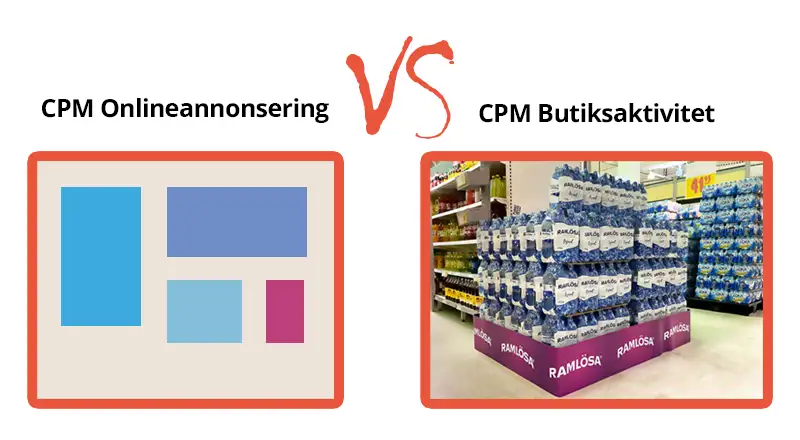
Do you wonder how your in-store advertising performs compared to your online advertising?
In this article, we go through the result of in-store marketing by measuring CPM (cost per thousand impressions), a comparable metric that we will use to show the performance of in-store advertising by comparing it to online advertising. In the process, we will also review CPM for the most popular digital advertising platforms.
The strength of digital advertising is in it’s trackability and measurability, which makes it data-driven. In the same sense, we believe that data should drive decision-making of advertising in offline channels as well. With this article, we hope to give FMCG companies a unique perspective on costs and results of advertising in physical stores. Then put that data in the context of digital marketing by comparing these completely different mediums and channels, physical stores vs online advertising, with a common comparable metric, CPM.
What is CPM?
Cost per thousand impressions, or “CPM,” refers to the cost of displaying an advertisement one thousand times (known as “impressions”). Also known as cost-per-mille, CPM is the most common pricing model in online advertising. If you see an ad placement advertised as $1 CPM, this means you’ll pay $1 every time your ad is seen 1,000 times.
The typical formula is: CPM = Advertising cost / 1000 Impressions.
Companies see the best results from CPM strategies when they’re used in a wider marketing campaign that is focused on raising awareness of their product and/or brand recognition.
CPM for online advertising
We reviewed the CPM for the most popular online advertising platforms from “AdStage’s Paid Media Benchmark Report 2020” [1]. These are the median CPM from the Q1 2020 report sorted by price
The cost varies between $1.53 to 59.82 with an average of $13.19. These are general numbers not considering all the different factors, such as campaign goal, target group and segments.
Also, a reason for the major price difference can depend on e.g. the value of the audience. The audience value is heavily affected by how close the consumer is to making a decision or taking an action in that medium and channel.
For example, the audience in Google Ads Search (inbound/pull) is in search of a product/brand with an existing interest which makes it more valuable compared to Instagram Feed (outbound/push) where the goal ordinarily is to inspire and create interest.
Nevertheless, brands in the FMCG category usually strive to have exposure and reach wherever the target audience is. Mixing channels and mediums covering as many touch points as possible in the consumer decision journey.
CPM for in-store advertising
When consumers are in a physical store, they are obviously there to shop. Consumer Packaged Goods (CPG), or Fast-moving consumer goods (FMCG), is a unique category. Purchases can be frequent and habitual. The research phase for potential buyers tends to be short to non-existent. Consumers buy what they usually buy or make their purchasing decisions in-store.
Which makes the store, inevitably, the last touch point in the consumer decision journey. Thuse also making it the most important and valuable advertising channel for the CPG advertisers
Pallet-wrap
One of the most effective and simple ways of advertising in-store is with pallet-wrap. By breaking down the numbers for the pallet wrap we hope to illustrate the often overlooked strengths of this medium.
Median cost of pallet wrap for 1 physical store [2]
$15
The average lifetime of a pallet-wrap [3]
1 månad
The average number of visitors in a store (hypermarket) under 1 month [4]
200 000 besökare
Detta ger en CPM kostnad på $0,075.
Concluding that the median CPM for in-store display (pallet wrap), $0.075, is a fraction of the cost compared to online-advertising, without taking into account the importance of the channel. Knowing with certainty that the audience is there to shop, oftenly deciding which product and brand to buy on that occasion. On average, In-store advertising costs 160 times less than digital advertising
Source:
[1] https://thinkshiftinc.com/blog/digital-advertising-benchmarks-all-agrimarketers-should-know-updated-for-2022
See also:
https://www.statista.com/statistics/873631/social-media-advertising-cpm/
https://revealbot.com/facebook-advertising-costs
[2] Based on median meter price calculated from the 8 965 425 meter miniwells (pallet wrap) sold by Eurowell in the European market from 2020-01-01 to 2021-12-31.
[3] Studies based on the sale of 99 177 232 meter Miniwell Pallet Wrap produced by Eurowell from the year 1999 to 2021 showed the average lifetime of a pallet-wrap in store with moderate use to be between 3-8 weeks.
[4] Based on public data from visitor counters at hypermarkets in Sweden. Because of covid requirements stores have installed public counters showing the number of visitors in real time. We tracked data from 12 different stores across Sweden postcovid. The number of visitors varies between 200 000 – 300 000, we choose the lower point to reserve ourselves against margins of error.

EuroWell is a Swedish company which delivers products for in-store display and sales promotion throughout Europe.
Offices in Stockholm & Paris, POS experts boosting grocery sales.
Unique printing network, safe delivery, customer-focused.
19,000 projects in 35 countries since 1999, valued returning clients.
Read more
Out-of-stock on the Rise: A Cause for Concern
December 6, 2023
FMCG: Unique CPM comparison between online and in-store advertising
September 29, 2022
Facebook study: Consumers make purchase decisions in store
September 22, 2021
Facebook study: Consumers make purchase decisions in store
Facebook study: Consumers make purchase decisions in store
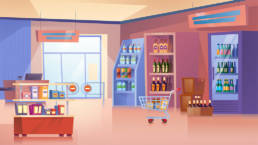
Facebook study by GroupM within FMCG shows that consumers make decisive purchase decisions in store. It is generally difficult for FMCG advertisers to get good results from marketing in Social Media according to the Facebook best practice framework “Brilliant Basics”.
The study describes the results of a meta-analysis of Marketing Mix Models for 19 Consumer Packaged Goods (CPG) brands, which cover a wide range of different product types and campaigns from Sweden, Denmark, Norway and Finland.
The purpose of the study called “Unlocking the full potential of social to drive CPG sales” was to evaluate the effects on Facebook advertising ROI in campaign driving according to Facebook’s best practice framework known as “Brilliant Basics.” Five of the seven principles of best practice were evaluated to understand their role in driving ROI. CPG brands can improve the return on their Facebook media investments, by as much as 43%, if they follow Facebook’s “best practice”
The five Facebook “best practices” in the study are:
- Setting a weekly frequency of 3 (increases ROI by 11%).
- Optimizing campaigns for an awareness objective (+ 8%).
- Setting the campaign duration to cover at least one purchase cycle (+ 7%).
- Targeting a broad, yet qualified audience (+6%)
- Using brand-building video assets fit for mobile (+ 5%).
All parameters collaborating and multiplying: 43%.
In addition, the study states that Consumer Packaged Goods (CPG), or Fast-Moving Consumer Goods (FMCG), is a unique category, which stands out from other verticals in many respects. Purchases can be frequent and habitual. The research phase for potential buyers tends to be short to non-existent. Consumers buy what they usually buy or make their purchase decision in store.
Hence, salience (i.e. staying top of mind), and building brand equity in the long term, are key to most CPG advertisers. These two themes help explain why price, distribution and in-store marketing activities tend to be critical in driving incremental sales (often assessed through Marketing Mix Modelling). While advertising certainly contributes to incremental short-term sales, it likely plays a comparatively smaller contributing role compared to other verticals.
GroupM Business Science have significant experience in Marketing Mix Modeling, having conducted more than 250 MMM studies for Nordic CPG advertisers (>1000 studies across all verticals) during the past 10 years. Findings from these projects reveal that CPG is the sector where paid media return on investment is the lowest and that CPG advertisers have difficulty using paid media to drive short-term sales.
You can read the study here:
https://www.groupm.se/wp-content/uploads/2021/04/Whitepaper-UNLOCKING-THE-FULL-POTENTIAL-OF-SOCIAL-TO-DRIVE-CPG-SALES.pdf

EuroWell is a Swedish company which delivers products for in-store display and sales promotion throughout Europe.
Offices in Stockholm & Paris, POS experts boosting grocery sales.
Unique printing network, safe delivery, customer-focused.
19,000 projects in 35 countries since 1999, valued returning clients.
Read more
Out-of-stock on the Rise: A Cause for Concern
December 6, 2023
FMCG: Unique CPM comparison between online and in-store advertising
September 29, 2022
Facebook study: Consumers make purchase decisions in store
September 22, 2021
